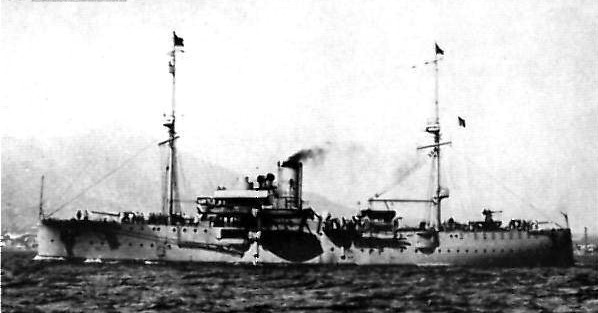
The Campania class were two small protected cruisers built for the Regia Marina close to WWI. Campania and Basilicata were the very last built of their kind, before being replaced by far more faster scouts. The Campania class was indeed tailored for overseas colonies, to replace the 1890s Calabria. Their career was cushy at best, with Basilicata being lost due to a boiler explosion in 1919 and Campania remaining in service and being use later as training ship from the end of the war up to 1937. #ww1 #regiamarina #italiannavy #cruisers #protectedcruisers #campania #basilcata
Design of the class
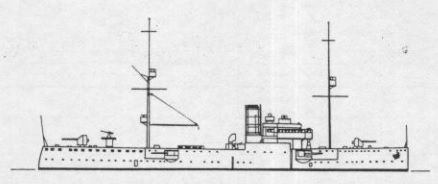
Hull and general design
The Campania class tailored as colonial cruisers, and almost large gunboats/HQ vessels for local overseas colonies and in peacetime, alternate as training ships for naval cadets. The design followed the one of the old cruiser Calabria (1894), initial prototype of colonial cruiser. Both were small and relatively slow to cruisers standards. Campania measured 76.8 meters (252 ft) long at the waterline and 83 meters long (272 ft 4 in) overall. The beam of 12.7 m (41 ft 8 in) produced a relatively high hull ratio, making them agile still, bleeding less speed in hard turns, with a moderate draft of 5 m (16 ft 5 in) which allowed them most large rivers. Displacement standard was 2,483 long tons (2,483 long tons) and they reached when fully loaded some 3,187 long tons (3,187 long tons).
The design comprises a straight hull from stem to stern, a large superstructure bridge, single round funnel, and two pole masts fore and aft of equal size, equipped with spotting tops. The crew of comprised 11 officers and 193 ratings;, but they received accomodations for 100 cadets and their officers, petty officers and staff, making for a 350 crew in training. The hull received longitudinal framing reinforcements, and the deck had bulwarks amidships, close to the funnel. The main guns were protected by shields and the rest were in casemates.
Protection
It was minimal, as for more protected cruisers, the term meaning “some protection” giving the fact there were still many unprotected cruisers in service when they were built. This minimal protection included armour plating on their deck, 25 mm (0.98 in) on its slopes when connecting to the belt and seemingly the same up to the vertical part. Apart this, there was a forward only conning tower with 50 mm (2 in) thick walls buried under the bridge. The deck main guns had semi-integral shields protected from small arms fire and shrapnel, as probably also the casemate barbettes. The underwater part was also highly subdivided, but there was little room to absorb a torpedo explosion, or mine detonation.
Powerplant
The Campania’s propulsion system comprised two propeller shafts mated to two vertical triple-expansion steam engines. Each drove a bronze three bladed single screw propeller. Steam came from four coal-fired, cylindrical fire-tube boilers. These boilers were trunked into a single funnel amidships. This powerplant was not exceptional, and provided 5,001 indicated horsepower (3,729 kW) in total for a top speed of just 15.7 knots (29.1 km/h; 18.1 mph). To remind, this was less than the latest armoured cruisers built at the time and even some 23 knots battleships. Basilicata managed on sea trials to reach 4,129 ihp (3,079 kW) and 15.5 knots (28.7 km/h; 17.8 mph). They were more impressive for their cruising radius of 1,850 nautical miles (3,430 km; 2,130 mi) at 10 knots (19 km/h; 12 mph) cruising speed, opening the whole Mediterranean. Boilers were of course oil-fired.
Armament
Main
Campania and Basilicata had a relatively large main battery of six Ansaldo 152 mm (6 in)/40-caliber modello 1899 guns mounted in single mounts, two in the axis, at the forecastle, and stern’s weather deck, and two on each broadside, behind hull recesses and sponsons, casemated, on the battery deck. These had built-up guns and were provided with armor-piercing and high-explosive shells with a muzzle velocity for the former approaching 690 meters per second (2,280 ft/s). In 1922, Campania had two of her 152mm/40 removed (likely aft casemate ones) and in the 1930s two more, keeping only her deck guns.
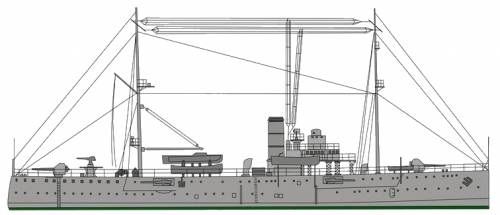
Basilicata prior to her loss (the blueprint.com).
Secondary
This battery was limited to two self-defence, close range, rapid fire Ansaldo 76 mm (3 in)/40 guns modello 1897. They were installed in low-angle mounts on the bridge. There were later added in wartime three Ansaldo modello 1916 76 mm/40 of the in new high-angle anti-aircraft mountings placed on an aft raised platform between funnel and aft mast. They were supplied with a 6-kilogram (13 lb) shell, fired at a muzzle velocity of 680 meters per second (2,200 ft/s).
Light Guns
They also carried smaller guns, two 47 mm (1.9 in) Vickers QF 3-pdr model 1908, and two Breda 8.8 mm (0.38 in) water-cooled machine guns that could be dismounted and reused on steam cutters for landing parties. There were no torpedo tubes. This guns variety, four calibers, was also intended for the cadets.
⚙ specifications |
|
| Displacement | 2,483 long tons (2,523 t), 3,187 long tons FL |
| Dimensions | 83 x 12.7 x 5m (272 ft 4 in x 41 ft 8 in x 16 ft 5 in) |
| Propulsion | 2 shafts TE engines, 4× FT boilers: 4,129-5,001 ihp (3,079 to 3,729 kW) |
| Speed | 15.5 to 15.7 kn (28.7 to 29.1 km/h; 17.8 to 18.1 mph) |
| Range | Range 1,850 nmi (3,430 km; 2,130 mi) at 10 knots |
| Armament | 6× 152 mm, 2× 76 mm, 3× 76 mm, 2× 47 mm, 2× MGs |
| Protection | Deck 25 mm (0.98 in), Conning tower 50 mm (2 in) |
| Crew | 11 officers, 193 ratings |
Construction
Campania and Basilicata were made on the same slipway, launched on the same day at Arsenale di Castellamare di Stabia. Last protected cruisers to be built by the Regia Marina World War I broke up and the shortage of steel, resources and manpower limited further cruise constructions. Instead were built smaller scouts such as the Riboty, Aquila, Mirabello as well as destroyers and submarines, more useful in the Adriatic. Postwar Italy obtained in compensation several light cruisers from Germany and Austria-Hungary which formed the bulk of Regia Marina’s reconnaissance force in the interwar, given the previous Italian scout cruisers, apart Quarto, were disappointing.
Their colonial livery combined a pale blue grey for the hull, and old style canvas colored superstructure – src. They probably also were tropicalized with wooden panelling and extra ventilation.
 Campania
Campania

Campania was launched like her sister on 23 July 1914. Fitting-out work was followed by a commission on 18 May 1917, and it was four months before her sister ship. The delay in 1914-17 was explained by shortages opf all sorts and lower priority now that the war had started for their intended role.
The first years of career was in the Italian African colonies: Italian Libya notably. She saw no action thus, as the main Italian assets were committed to the Adriatic, and by 1 July 1921, she was reclassified as a gunboat (more fitting to her capabilities) with two 152 mm guns removed as she was reconstructed until 1922. She then became a school ship for naval cadets and stayed in this role until stricken from the Regia Marina’s naval register on 11 March 1937, sold for scrapping.
 Basilicata
Basilicata
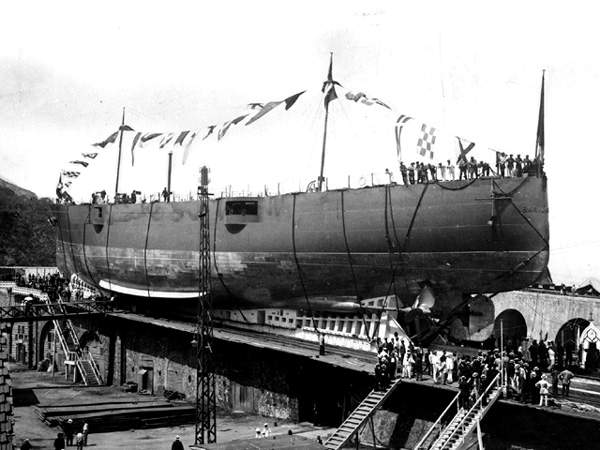
Built between 1913 and 1917 in the Castellammare di Stabia shipyards to a design by the Inspector General of Naval Engineering Giuseppe Rota and derived from the torpedo boat Calabria, the Basilicata was initially classified as a 5th class battleship and then a subsidiary ship of II class, before receiving the definitive classification of light cruiser for colonial services. The ship and her sister unit Campania were built one in front of the other on the same port of call, and launched on the same day: while the Campania went down to sea as planned, the Basilicata, launched immediately afterwards, broke the cables holding it and went down into the sea. sea alone.
Mainly employed in liaison duties with the colonies, the ship participated in the First World War, but did not take part in any significant war action.
On 21 November 1918, shortly after the end of the war, Basilicata transported and landed in Pago a unit responsible for the occupation of the island in the name of Italy.
After just two years of service, on the afternoon of 13 August 1919, the small cruiser, while headed to the Red Sea under the command of the captain Fossati to replace the torpedo boat Calabria in its stationary role, sank in flames in the waters of Tewfik (at the mouth of the Suez Canal), not far from Port Said, due to the explosion of a boiler.
About 30 of the 250 crew members perished in the disaster, mostly Eritrean Ascari[6][7]. The victims were recorded mainly among those who were near the engine room at the time of the explosion, while the rest of the crew (including commander Fossati), thanks to the shallow depth (twelve metres), which prevented the ship from sink completely, he was able to save himself.
The wreck, which sank in shallow water, was recovered first after moving it in three days, given that it was blocking the Suez Canal, and then recovered on 12 September 1920, but the damage was deemed too expensive to repair and therefore the ship was deregistered and, on 1 July 1921, sold for scrapping.
Basilicata was launched at Castellammare less than a year later her sister on 23 July 1914 but fitting-out work was so slow after the start of the war that she was completed only by 1 August 1917, four months after her sister ship. Like her sister she was sent outright to Italian Libya and stayed there until postwar. On 13 August 1919, while moored in Tewfik, southern corner of the Suez Canal, one boiler accidentally exploded, and the damage to her hull was so severe the gash created caused rapid flooding, and she sank on an event keel and in shallow waters. So salvage was possible, operations starting soon after and were concluded successfully on 12 September 1920 after three days. After being refloated however the Regia Marina had no use to repair thois now obsolete ship given the cost so she was stricken and on 1 July 1921 was sold to local ship breakers in Suez.
Read More/Src
Books
Fitzsimons, Bernard, ed. (1979). The Illustrated Encyclopedia of 20th Century Weapons and Warfare. Phoebus Publishing: London.
Friedman, Norman (2011). Naval Weapons of World War One. Annapolis: Naval Institute Press.
Fraccaroli, Aldo (1985). “Italy”. In Gardiner, Robert & Gray, Randal (eds.). Conway’s All the World’s Fighting Ships 1906–1921.
Marshall, Chris, ed. (1995). The Encyclopedia of Ships: The History and Specifications of Over 1200 Ships. Enderby: Blitz Editions.
J. Gardiner, Conway’s all the world’s fighting ships
Links
en.wikipedia.org Campania-class_cruiser
navypedia.org/ships/ campania.htm
associazione-venus.it/ 13-R-Basilicata
Model Kits
None discovered so far.

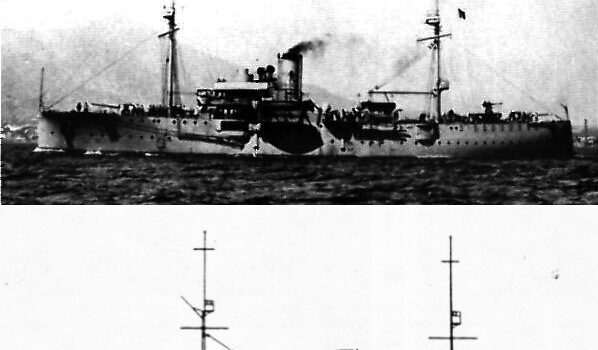
 Latest Facebook Entry -
Latest Facebook Entry -  X(Tweeter) Naval Encyclopedia's deck archive
X(Tweeter) Naval Encyclopedia's deck archive Instagram (@navalencyc)
Instagram (@navalencyc)





 French Navy
French Navy Royal Navy
Royal Navy Russian Navy
Russian Navy Armada Espanola
Armada Espanola Austrian Navy
Austrian Navy K.u.K. Kriegsmarine
K.u.K. Kriegsmarine Dansk Marine
Dansk Marine Nautiko Hellenon
Nautiko Hellenon Koninklije Marine 1870
Koninklije Marine 1870 Marinha do Brasil
Marinha do Brasil Osmanlı Donanması
Osmanlı Donanması Marina Do Peru
Marina Do Peru Marinha do Portugal
Marinha do Portugal Regia Marina 1870
Regia Marina 1870 Nihhon Kaigun 1870
Nihhon Kaigun 1870 Preußische Marine 1870
Preußische Marine 1870 Russkiy Flot 1870
Russkiy Flot 1870 Svenska marinen
Svenska marinen Søværnet
Søværnet Union Navy
Union Navy Confederate Navy
Confederate Navy Armada de Argentina
Armada de Argentina Imperial Chinese Navy
Imperial Chinese Navy Marinha do Portugal
Marinha do Portugal Mexico
Mexico Kaiserliche Marine
Kaiserliche Marine 1898 US Navy
1898 US Navy Sovietskiy Flot
Sovietskiy Flot Royal Canadian Navy
Royal Canadian Navy Royal Australian Navy
Royal Australian Navy RNZN Fleet
RNZN Fleet Chinese Navy 1937
Chinese Navy 1937 Kriegsmarine
Kriegsmarine Chilean Navy
Chilean Navy Danish Navy
Danish Navy Finnish Navy
Finnish Navy Hellenic Navy
Hellenic Navy Polish Navy
Polish Navy Romanian Navy
Romanian Navy Turkish Navy
Turkish Navy Royal Yugoslav Navy
Royal Yugoslav Navy Royal Thai Navy
Royal Thai Navy Minor Navies
Minor Navies Albania
Albania Austria
Austria Belgium
Belgium Columbia
Columbia Costa Rica
Costa Rica Cuba
Cuba Czechoslovakia
Czechoslovakia Dominican Republic
Dominican Republic Haiti
Haiti Hungary
Hungary Honduras
Honduras Estonia
Estonia Iceland
Iceland Eire
Eire Equador
Equador Iran
Iran Iraq
Iraq Latvia
Latvia Liberia
Liberia Lithuania
Lithuania Mandchukuo
Mandchukuo Morocco
Morocco Nicaragua
Nicaragua Persia
Persia San Salvador
San Salvador Sarawak
Sarawak Uruguay
Uruguay Venezuela
Venezuela Zanzibar
Zanzibar Warsaw Pact Navies
Warsaw Pact Navies Bulgaria
Bulgaria Hungary
Hungary

 Bundesmarine
Bundesmarine Dutch Navy
Dutch Navy Hellenic Navy
Hellenic Navy Marina Militare
Marina Militare Yugoslav Navy
Yugoslav Navy Chinese Navy
Chinese Navy Indian Navy
Indian Navy Indonesian Navy
Indonesian Navy JMSDF
JMSDF North Korean Navy
North Korean Navy Pakistani Navy
Pakistani Navy Philippines Navy
Philippines Navy ROKN
ROKN Rep. of Singapore Navy
Rep. of Singapore Navy Taiwanese Navy
Taiwanese Navy IDF Navy
IDF Navy Saudi Navy
Saudi Navy Royal New Zealand Navy
Royal New Zealand Navy Egyptian Navy
Egyptian Navy South African Navy
South African Navy






























 Ukrainian Navy
Ukrainian Navy dbodesign
dbodesign